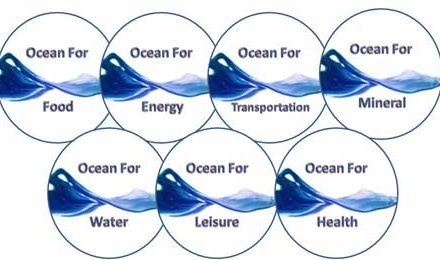
The impact of South Africa’s Greylisting by FATF on Namibia economy

By Josef Kefas Sheehama.
The Namibian economy is closely linked to South Africa, with the Namibia dollar pegged one-to-one to the South African Rand. This implies that any adverse financial and economic developments in South Africa, have an immediate impact on the Namibian economy.
Also, a currency peg is inherently risky for it can produce the wrong political and economic implications.
South Africa was put on a ‘grey list’ by the Financial Action Task Force (FATF) for falling short of certain international standards for combatting money laundering and other serious financial crimes.
The FATF is an inter-governmental policymaking body that determines anti-money-laundering (AML) and countering the financing of terrorism (CFT) standards to safeguard the global financial system. The grey list contains a set of countries whose financial sectors have strategic AML/CFT weaknesses due to inadequate regulations, enforcement or both. The FATF overall aim is to tackle global money laundering and terrorist financing.
The impact of greylisting may hinder Namibia’s economic growth and development. Furthermore, the global correspondent banks involved in transactions with South African and Namibian entities are likely to demand a higher level of due diligence. This is positive in that it will necessitate greater documentation and transparency within countries’ financial systems, helping to improve AML/CFT practices in general. However, banks will have to enhance their own compliance procedures.
This will affect crossborder capital flows, especially for the trade sector. Documentary requirements for export and import payments, such as letters of credit, may become more challenging to fulfil, potentially raising costs and hampering business for companies engaged in trade. These changes will make Namibia and South Africa’s foreign exchange control regime more restrictive, although it is not expected to create any major barriers to ongoing trade and investment flows for the economy as a whole.
Namibia and South Africa commonly establish a currency peg with a stronger or more developed economy so that domestic companies can access broader markets with less risk. It is important to take note that what is good for South Africa is good for Namibia. It is unfortunate that greylisting by the FAFT will directly or indirect affect us due to the currency peg. The clear message is that unless we see more investigations, prosecutions and asset forfeitures, and unless both countries can show they are ready to act decisively and effectively against financial crimes, they will face potentially severe economic consequences.
The major FATF-related risk to the economy stems from the possibility of the government being unable to implement the action plan in a satisfactory manner. The greylisting will have negative consequences, making it more costly and cumbersome to do business, particularly across borders.
Quite aside from the economic cost though, the greylisting is a sharp reminder that we are behind the curve on implementing the reforms we have promised on fighting crime, corruption and money laundering. That is causing severe damage to the economy and the social fabric. We should not need the FATF to tell us that delivery on these reforms should be sped up.
The continuing unresolved fishrot scandal has plunged Namibia under the spotlight for money laundering and financial crimes. In the Fishrot case, the shelf companies were used to receive bribes and any other payments for the benefit of the implicated people. This was due to a lack of beneficial ownership information relating to legal persons. Due to the Fishrot scandal, Namibia is now under scrutiny by the International Cooperation Review Group due to some glaring deficiencies in our domestic Anti-Money Laundering.
The effectiveness of a country’s AML/CFT/CFP system is measured against 11 pre-determined immediate outcomes (IOs) and ratings can be either (HE) highly effective, (SE) substantially effective, (MD) moderately effective, or (LE) low level of effectiveness. Namibia scored slightly worse than South Africa on the effectiveness of its AML/CFT/CFP system, according to Marlene Miller, Compliance Practitioners expert’s assessment.
The Mutual Evaluation Report (MER), indicates that criminal cases are generated mostly from financial proceeds, damaging the country’s financial and legal systems’ credibility. These include the Fishrot scandal, the Value-Added Tax (VAT) scam and the Namibia SME Bank fraud. The report highlighted that most of the proceeds were laundered through banks, unit trust schemes and asset management-related financial services.
The MER found that some companies, service providers, lawyers and real estate agents were found to have a high money laundering vulnerability in the designated non-financial businesses and professions sector and were also central to the high-profile cases. It’s very unfortunate where we find ourselves as a country, especially the credibility of the Namibia economy. When the guys on top sneeze we’re gonna catch the flu. It’s not only the country that will feel the impact, but also the man on the street.
Furthermore, while greylist classification is not as negative as the blacklist, greylisted South Africa may still face economic pains from other institutions like the IMF and the World Bank and experience adverse effects on trade.
It is noteworthy that the strategic deficiencies identified by the FATF do not relate directly to the country’s financial sector. This means that financial stability and costs of doing business with South Africa and Namibia will not be seriously impacted by the greylisting. But the fact that these problems change shows that they cannot be intractable. They are all serious and need to be solved.
But we have the ability to gain traction on them, albeit at times in a messy way. The effect of the above is that we start perceiving our country and its economy as risky; and we avoid investing, when the opposite should be the case. We misprice risk and subsequently miss opportunities. If we consider the country as a company, we can then use GDP as a proxy for the revenue of the country, and the currency exchange rate as an indicator for the share price.
With the greylisting of South Africa, the country will need to continue working to improve the AML/CFT system. Due to the currency peg, Namibia and South Africa need to work together to meet the FATF requirements in these specific areas. Both will also need to continue strengthening their capability to fight money laundering, terrorist financing, corruption, and other financial crimes. This is principally for the benefit of the countries, economies, financial systems, and also for the safety and security of the countries’ citizens.
In conclusion, continuously improving the integrity of the financial system is not merely a FATF exercise, but rather part of government’s objectives for the regulation of the financial sectors. This is because the severe economic risk of being greylisted is related to the withdrawal of banking and payment services necessary for trade and other transfers, and ultimately for economic growth.










































